Teaching a dyslexic child to read can be one of the most challenging and rewarding parts of homeschooling. I used to wonder how in the world that would work. I literally did not know how to do this when I started homeschooling. However, it was my third child who had dyslexia, instead of my first. So by the time I realized I had to figure this out, I had a lot of experience homeschooling and figuring things out.
Age 5
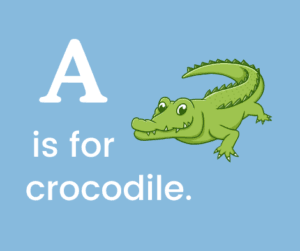 I did not figure out quickly that my kid was dyslexic. I thought she was just a little slower to pick up on words than her siblings. When she was near the end of her kindergarten year, I remember asking “Can you sing the alphabet song?” And my precious angel spits out a random string of letters that was definitely not the song. I honestly thought maybe I had forgotten to teach her. I was homeschooling two older kids after all. So I asked my other kids to work with her on the song. Despite many tries, she had a very hard time with the song.
I did not figure out quickly that my kid was dyslexic. I thought she was just a little slower to pick up on words than her siblings. When she was near the end of her kindergarten year, I remember asking “Can you sing the alphabet song?” And my precious angel spits out a random string of letters that was definitely not the song. I honestly thought maybe I had forgotten to teach her. I was homeschooling two older kids after all. So I asked my other kids to work with her on the song. Despite many tries, she had a very hard time with the song.
The signs something wasn’t typical started to emerge. When asked “What starts with A?” She would reply “Crocodile!” She understood the pictures in her alphabet book, but not the relation to letter sounds. She could not tell you words that rhymed. She also had a hard time pronouncing certain sounds like “st.” At age 5, that alone isn’t considered a reason to go to speech therapy. I looked into it because her sibling found it hysterical to ask her to say stick, and her “st” sounded like “d.”
Struggling
In the years she was 6 and 7, we tried various learn-to-read programs. Nothing worked. She learned to cheat on the Apps we tried. If you just pushed enough buttons you could always win, even if you didn’t read the words or understand them. We tried copy work. She could copy the words beautifully, but she made them as art. She had no connection to what they actually said. We even tried cursive with the same results. Beautifully written sentences she could read just as well as if I had had her copying Ancient Greek symbols. We tested out Teach Your Child to Read in 100 Easy Lessons. It was not easy, and it was miserable for both of us.
Making Progress
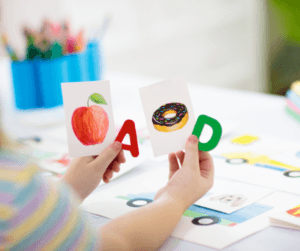 Finally, a teacher friend gave me tips about teaching dyslexic kids that led to what we offer in Foundations and Fundamentals. We worked on making our own book of letters and sounds and she read it to me every day until she finally knew what letters made which sounds. It took a few months of practicing for a few minutes every single day. We also had her make the letters with her arms, her body, objects, and the letter parts in the program. We played with letters. I did my best to make them fun, not just work.
Finally, a teacher friend gave me tips about teaching dyslexic kids that led to what we offer in Foundations and Fundamentals. We worked on making our own book of letters and sounds and she read it to me every day until she finally knew what letters made which sounds. It took a few months of practicing for a few minutes every single day. We also had her make the letters with her arms, her body, objects, and the letter parts in the program. We played with letters. I did my best to make them fun, not just work.
Reading
We stepped into actual reading at about age 8 with the program All About Reading. I chose them because they are an Orton-Gillingham-based program that is designed to be used by a homeschool mom. We went slow and steady. Every level we completed took more than a year to complete. We worked on blending sounds, learned phonics rules, played games, and read stories. At times, we didn’t follow the program perfectly, taking breaks and skipping things if it was stressing her out. But the method still worked. The combination of games, flashcards, stories to read, and learning rules most of us don’t know about the English language was the right method for my kid.
After level 3, my child asked for a break from the program and I let her take one. Instead of more lessons, I assigned her to read on her own for 10 minutes a day. I let her choose any book she wanted, and she started by choosing easy-reader books far below her current level. Gradually she felt more confident, choosing harder books. I increased the number of minutes I asked her to read, working up to about 20 minutes of reading per day.
On Grade Level
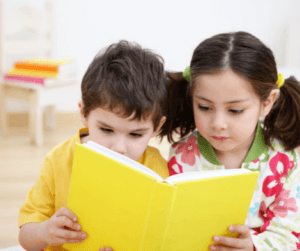 Around the age of 12, my child took on reading the book Percy Jackson and the Lightning Thief. This book had been a favorite of both of her older siblings, and she had heard it read aloud before. It was her choice to take on this new challenge. She started reading it while sitting with an older sibling and they talked about the book as she read it to herself and had commentary. Their giggles at the antics of the characters brought me pure joy. After the first book, she read the next and then the next.
Around the age of 12, my child took on reading the book Percy Jackson and the Lightning Thief. This book had been a favorite of both of her older siblings, and she had heard it read aloud before. It was her choice to take on this new challenge. She started reading it while sitting with an older sibling and they talked about the book as she read it to herself and had commentary. Their giggles at the antics of the characters brought me pure joy. After the first book, she read the next and then the next.
That year, we did our state required end of year testing, instead of the evaluations we had been doing. She tested out as reading above grade level! I was hoping she would test in the 50th percentile and she scored many points better than that. I have never felt so much relief and joy over a single score, not even one of my own.
Present
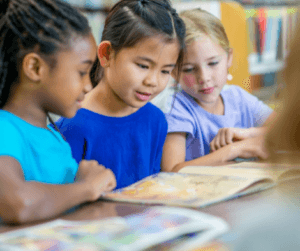 We never finished the reading program. Instead, we switched to focusing on spelling. Spelling is hard for this kid. I thought learning the phonics rules would make it easier, but it has been a fresh struggle for her. Thankfully, she is great at using voice-to-text and we continue to work on her writing skills. That said, she can read anything she puts her mind to. I believe that someday she will also be able to write anything she chooses, just a bit later than a typical school would have wanted.
We never finished the reading program. Instead, we switched to focusing on spelling. Spelling is hard for this kid. I thought learning the phonics rules would make it easier, but it has been a fresh struggle for her. Thankfully, she is great at using voice-to-text and we continue to work on her writing skills. That said, she can read anything she puts her mind to. I believe that someday she will also be able to write anything she chooses, just a bit later than a typical school would have wanted.
She will probably always read more slowly than those without dyslexia. If she walks past a sign and you ask “What did that say?” She will have no clue. Her brain doesn’t pick up on words unless she focuses on them. Ironically, my middle child has hyperlexia, so he just can’t fathom how that works. The difference in the ways they need to be homeschooled is huge, and at times exhausting for me. But at other times, they make a great team. If they have a task to do, he can read the directions out loud and she is great at getting things done.
A is now working on an alphabet book for kids like her. It is designed to show others what it is like to have dyslexia. Let me know if you would be interested in seeing her book when it is ready!
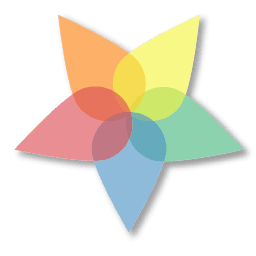




0 Comments